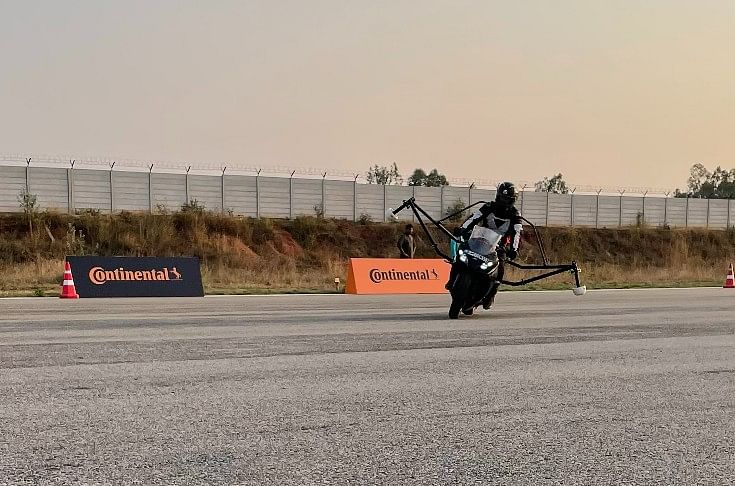Continental’s TechDrive targets 100-300 cc two-wheeler segment
Some of the products on display are being tested by OEMS.
Continental’s two-day technology day held at the Taneja Aerospace and Aviation at Hosur, on the outskirts of Bengaluru had a wide range of exhibits from the ARAS (Advanced Rider Assistance Systems) Technologies, and Advanced ABS to connected technologies and surface solutions.
“These products are targeted at the 100-300cc segment where motorcycles equipped with functions like blind-spot detection, optimised curve braking and rear wheel lift protection are expected to be in demand in three years’ time,” explained Krishan Kohli, India Market Head -VED & HBS and MD, Continental Automotive Brake Systems. “These products are currently being tested by several OEMs, and will take some time to enter the mainstream segment,” he added.
Prashanth Doreswamy, president and CEO, Continental India said, “This event aims to showcase technologies developed to suit the needs of the local consumer.”
“India is a price-sensitive market and we are aware of market dynamics and how they work. Over the years, we have invested in a manufacturing and engineering footprint and believe in ‘in the market, for the market’ helps bring in the right technologies at competitive prices,” Kohli said.
Live demonstration
Continental attempted to showcase the features of their ARAS with test vehicles at the airstrip where functions like blind spot detection (BSD), optimised curve braking (OCB), digital service platform, telematics control unit (TCU), deflation detection system plus (DDS+), mobile communication unit (MCU), 48V Battery Management Systems (BMS) and wheel and engine speed sensor as well as eRPS (Electric Rotary Position sensor), Key as a Service (KaaS) were demonstrated.
While the BSD solution enables the rider to monitor blind spots on adjacent lanes with a radar sensor and can provide visual warnings, the system can also indicate hazardous lane changes through the Lane Change Assist (LCA) feature. Rearward-facing radar sensors scan the road area behind and next to the motorcycle, providing a warning if a lane change is not recommended at a given point in time.

The OCB helps riders apply brakes at curves or turns where there is a high tendency of falling off due to wheel lock. The ABS brake system takes the angled position of the motorcycle (using lean angle information from the Continental sensor box) into account. Depending on the incline, the ABS control helps prevent wheel lock while providing good braking and steering, thereby improving vehicle handling and making braking safer.
The digital service platform makes vehicles available with services to create a seamless experience for the end consumer and also enables shared mobility. Services offered under this platform include Key as a Service, live tracking, geo-fencing, user registration and management, B2B Interface, smart booking, and trip history, among others. The DDS+ detects loss in tyre pressure by using only wheel speed sensor signals with no requirement for additional sensors.
RELATED ARTICLES
Cosmo First diversifies into paint protection film and ceramic coatings
The Aurangabad, Maharashtra-based packaging materials supplier is leveraging its competencies in plastic films and speci...
JSW MG Motor India confident of selling 1,000 M9 electric MPVs in first year
The 5.2-metre-long, seven-seater luxury electric MPV, which will be locally assembled at the Halol plant in Gujarat, wil...
Modern Automotives targets 25% CAGR in forged components by FY2031, diversifies into e-3Ws
The Tier-1 component supplier of forged components such as connecting rods, crankshafts, tie-rods, and fork bridges to l...





 By Autocar Professional Bureau
By Autocar Professional Bureau
 07 Apr 2022
07 Apr 2022
 8691 Views
8691 Views












